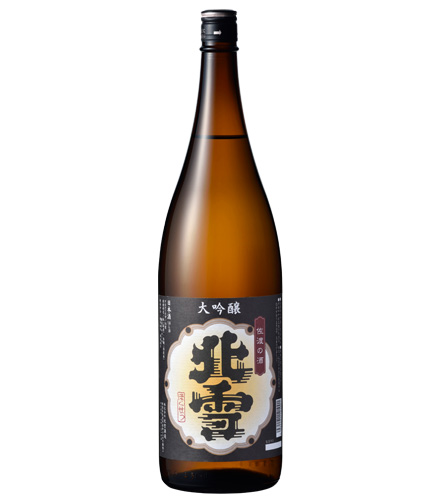sakeNo16:Nobu's sake Hokusetu
北雪(Hokusetu):佐渡(sado)の酒1:http://sake-hokusetsu.com/
Take a brewery. I value cherished alcoholic beverages.
But that's no use.
There is no limit to the taste of sake.
I will challenge all possible possibilities.
Today 's highest, tomorrow beyond.
Seeking a cup full of inviting all people who love drinks
to a new world.
Northern Snow Brewery will continue to be a challenger
from now on.
Hokusetu was founded in the Meiji 5 era.
Beginning is Sado Akuma.
On the seaside of a small harbor,
Hokusetu Brewery started making sake as a warm
sake brewery.
In the Meiji, Taisho and Showa era, in the Showa 23rd,
Established Huzu Sake Branch limited liability company.
We changed our company name from Hokusetu Sake Brewery Co., Ltd. to Heisei from 1995.
Skillful skill that has been handed down since its foundation.
On the other hand, music performances, ultrasonic vibrations,
centrifuges, etc.
Incorporating a new "one hand" that had never been before,
Creating innovative sake that opens up the era of sake making.
Tradition and innovation are exactly the challengers of
Hokusetu Brewery.
Symbol Mark Design Concept
Northern snow which celebrated the 2013 and 141 years,
and further aiming to be 100 years from here,
rather than strongly developing modernity, aiming at
what does not feel the times, adapting to any era,
Hokusetu was born In honor of the symbol marks
that were in use from the beginning, it was designed in
a way that renovates the northern snow
and the snowprint written in beard letters.
The triplet of snowprints depicted by a series of regular circles
means rice, water, koji which is a material of sake.
In addition, there are the rain waves of the Sea of Japan and the mountains leading to Sado Island, and it is
a fresh and lively expression that expresses the refreshing
sensation and powerfulness of freshly made sake.
In the snowprints, we inserted necessary character information
and decided to mention all of Hokustu with this one symbol mark.
The basic color is "dark blue close to black".
From the name of Kita-snow named for aiming at a sake
which made it slimy like a melting melt, the coldly clad storage air
of the time when the snow is accumulating, the depth of
the ocean and the depth of the drinking creation
are overlapped Adopted deep blue color navy.
Everyone has an existing image of "sake like sake"
while the atmosphere of mixed nostalgia and newness
takes over the traditional sake making, it is suitable
for Hokusetu which incorporates
advanced technology and continues evolving .
Beautiful nature creates beautiful sake.
Majestic and rough, the Great Sado Mountains.
Small Sado Mountain Range, where gentle mountain ranges
and sandy beach spread.
Soft natural water suitable for rice production,
which springs out from the hilly land.
Sado Island, which has a blessed climate,
There is a perfect condition for drinking indeed.
It is Daiginjo which brought up polishing up to 40% Sado
Goshikoshi Talei. It features a soft taste, a fragrance of
fresh melons and flowers.
hokusetu Daijinsei
Daiginjo of Kitayuki began with this one.
High grinding rice with large grain suitable for sake brewing is highly polished and it is Daiginjo made by Kuran's heart.
Please enjoy the aromatic fragrance and delicate taste unique to
Daiginjo with cold sake.
Daiginjo with cold sake.
Hokusetu special book brewing

Well cool and okay.
Hidden dry spirits that minimize alcohol brewing.
Delicious Sake Award 2000 in a Wineglass
Gold award winning
"Shuzen Contest 2012"
Value wine alcohol "Kuru 燗" department gold medal won prize
"Shuzen Contest 2013"
Value wine alcohol "Kuru 燗" department gold medal won prize
"Shuzen Contest 2015"
Awarded a Gold Award for Value Suzaki "Hot Spot" Category
Rice milled rice (Koji rice / Kumamoto rice): 500 thousand stones (50%) / 500 thousand stones (55%)
Japanese sake degree + 5 acidity 1.3
Amino Acidity 1.1 1.1%
Water quality soft water




コメント